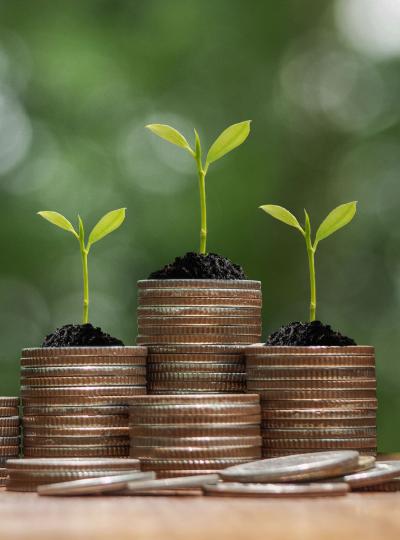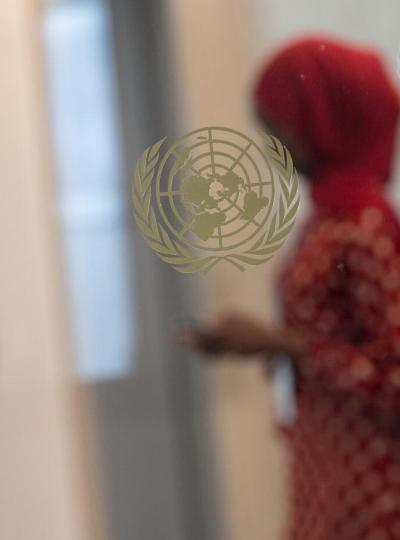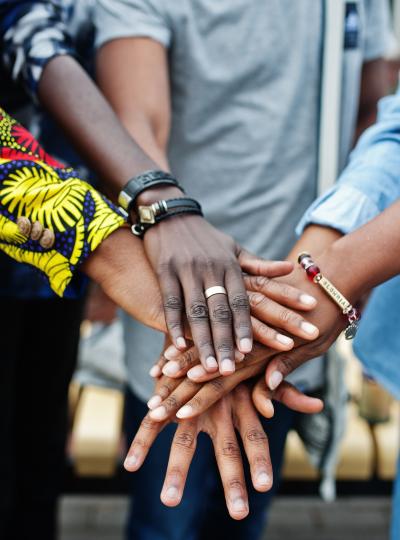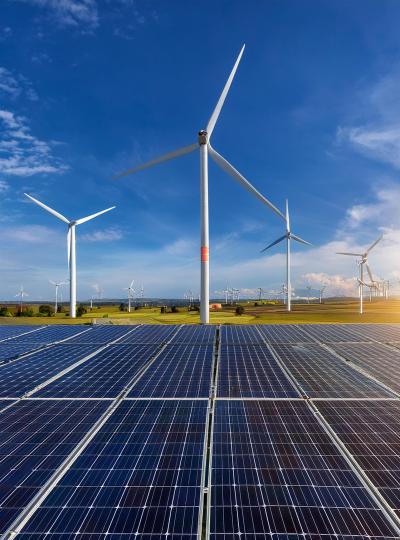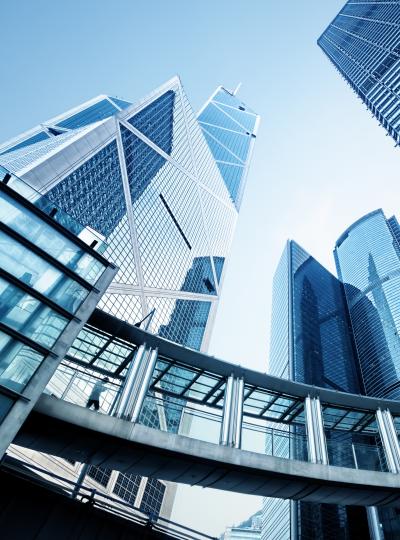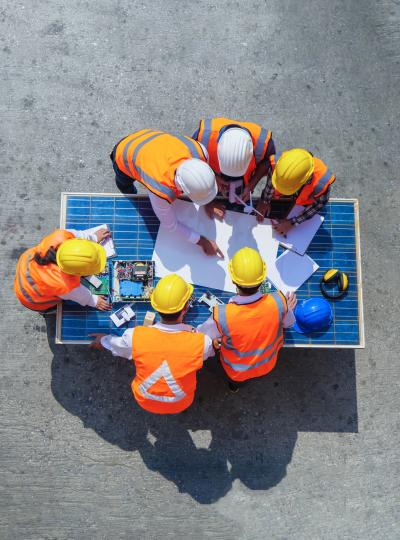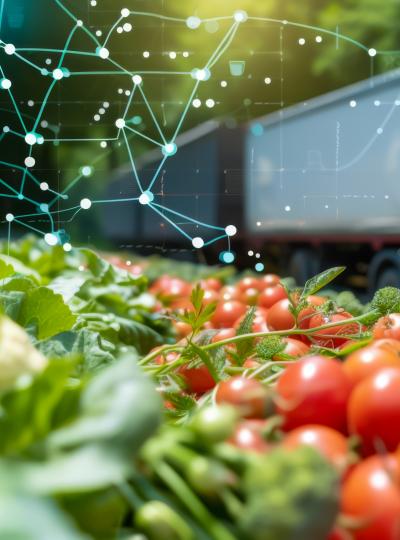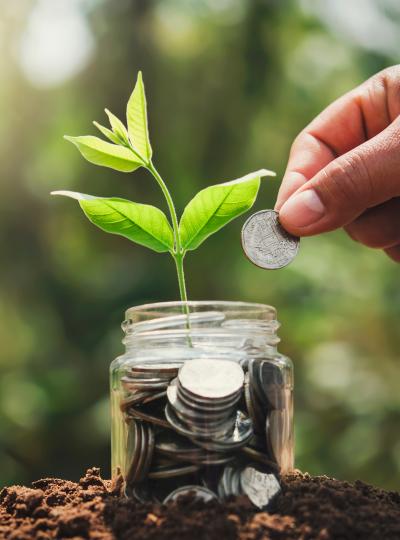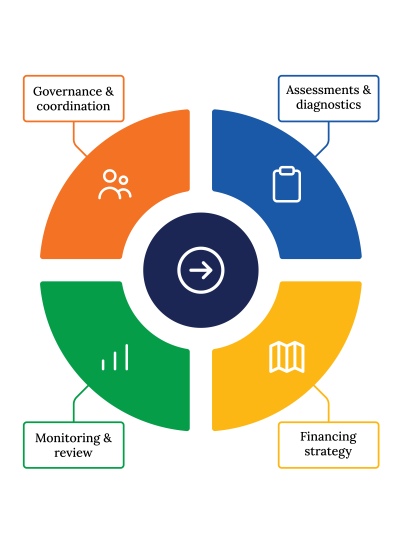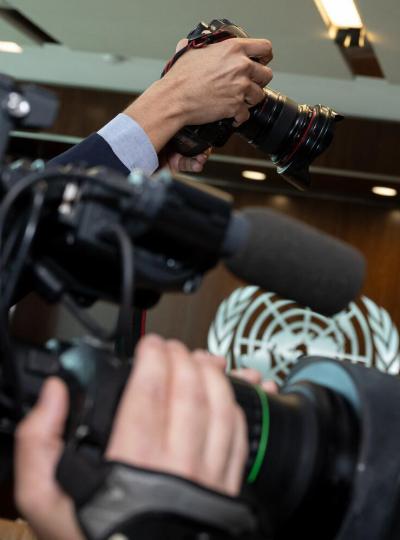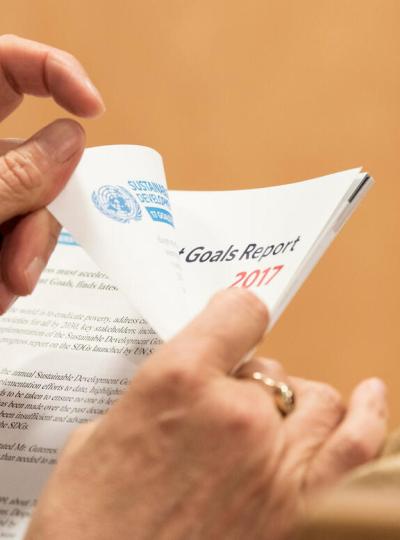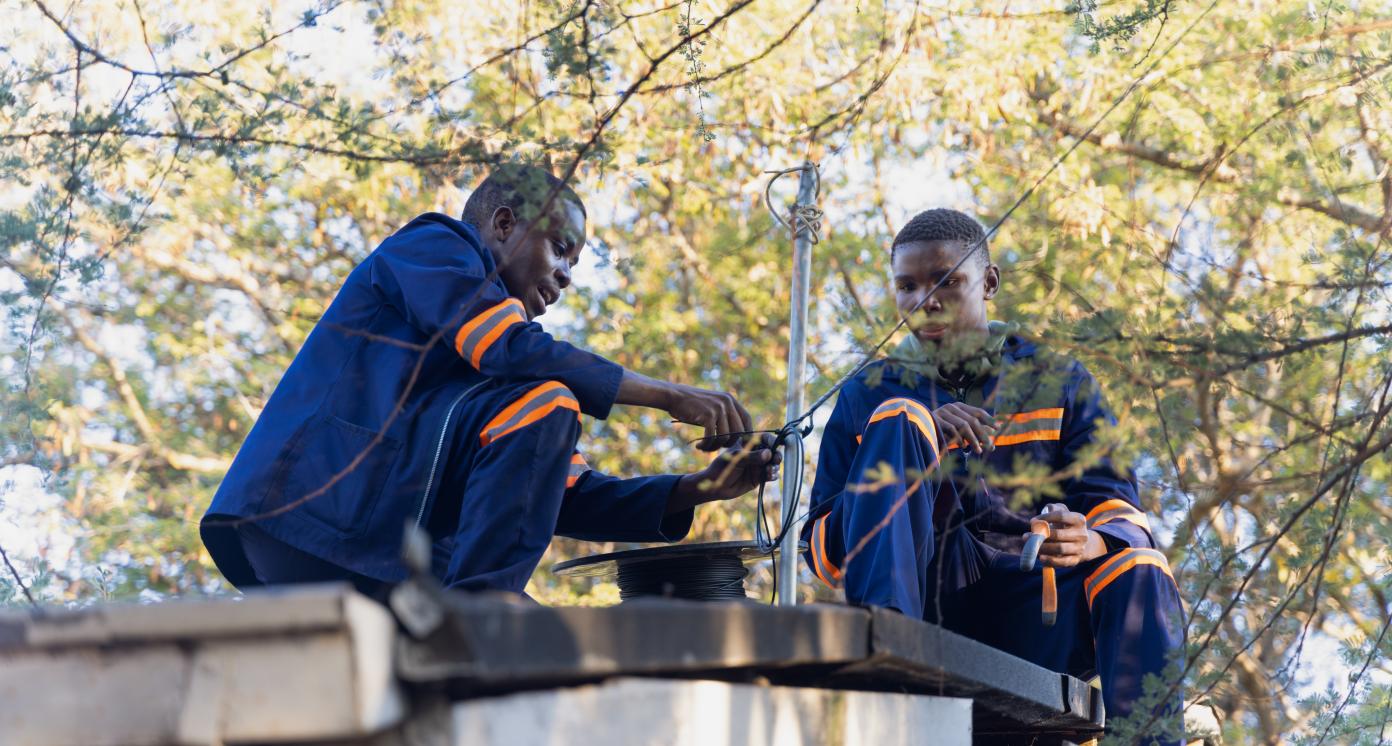Optical Fiber Networks and High-Speed Internet Services
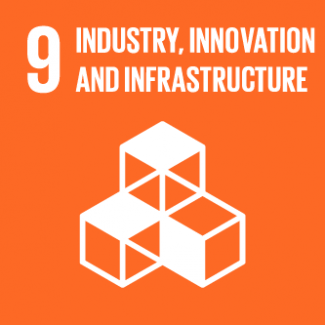
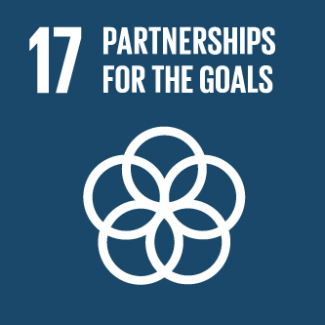
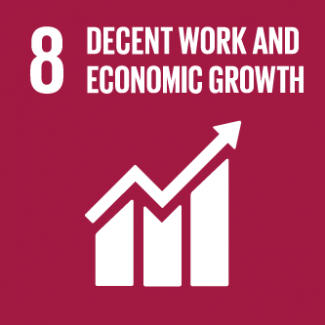
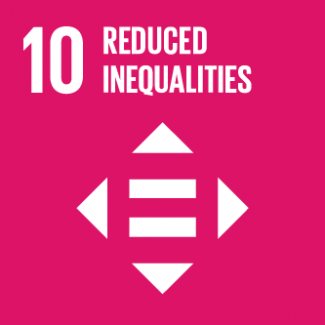
Business Model Description
Deploy a high-speed fiber optic network, independently or with other internet suppliers, to deliver premium internet services to households, enterprise clients, and public agencies, providing dedicated connectivity and cloud-based solutions. Under a Public-Private Partnership with the government of Côte d'Ivoire, private actors can contribute to the development of the country's 7,000-kilometer backbone project, providing financing and building infrastructure. Contracting firms are also eligible to commercialize the infrastructure they develop. Additionally, wholesale services to internet service providers (ISPs) and mobile operators will maximize infrastructure utilization and generate long-term revenue streams (53).
Expected Impact
Foster digital inclusivity, enhance economic empowerment, and reduce gender inequality by expanding access to the internet.
How is this information gathered?
Investment opportunities with potential to contribute to sustainable development are based on country-level SDG Investor Maps.
Disclaimer
UNDP, the Private Finance for the SDGs, and their affiliates (collectively “UNDP”) do not seek or solicit investment for programmes, projects, or opportunities described on this site (collectively “Programmes”) or any other Programmes, and nothing on this page should constitute a solicitation for investment. The actors listed on this site are not partners of UNDP, and their inclusion should not be construed as an endorsement or recommendation by UNDP for any relationship or investment.
The descriptions on this page are provided for informational purposes only. Only companies and enterprises that appear under the case study tab have been validated and vetted through UNDP programmes such as the Growth Stage Impact Ventures (GSIV), Business Call to Action (BCtA), or through other UN agencies. Even then, under no circumstances should their appearance on this website be construed as an endorsement for any relationship or investment. UNDP assumes no liability for investment losses directly or indirectly resulting from recommendations made, implied, or inferred by its research. Likewise, UNDP assumes no claim to investment gains directly or indirectly resulting from trading profits, investment management, or advisory fees obtained by following investment recommendations made, implied, or inferred by its research.
Investment involves risk, and all investments should be made with the supervision of a professional investment manager or advisor. The materials on the website are not an offer to sell or a solicitation of an offer to buy any investment, security, or commodity, nor shall any security be offered or sold to any person, in any jurisdiction in which such offer would be unlawful under the securities laws of such jurisdiction.
Country & Regions
- Côte d'Ivoire: Comoé
- Côte d'Ivoire: Denguélé
- Côte d'Ivoire: Savanes
- Côte d'Ivoire: Zanzan
Sector Classification
Infrastructure
Development need
Côte d'Ivoire estimated its public investment financing needs at 15 billion dollars over the period 2021-2025, notably to fund large infrastructure projects and digital technology. The coverage rate for cleaning services increased from 3.3% in 2018 to 10.4% in 2022, and remains limited in rural areas. Côte d'Ivoire's ICT Development Index was ranked 127th in the world in 2024, lower than the average for countries with the same level of GDP per capita (1, 7, 8).
Policy priority
The National Development Plan (2021-2025) aims to develop large infrastructure for large cities facing the challenge of rapid urbanization, including the construction of interchanges, and 4,334 km of new roads, four recovery units for solid waste, and the extension of 5,435 km of fiber optic network (3, 8).
Gender inequalities and marginalization issues
Large infrastructure projects have significantly advanced the development of southern cities, but progress in northern rural areas remains modest, leading to persistent inequalities in access to basic amenities. Northern regions have high levels of multidimensional poverty and low rates of access to adequate sanitation. Ivorian women are particularly vulnerable to sanitation issues as 85.9% of them are in charge of the supply of water within their family (2, 3, 4, 5, 18).
Investment opportunities introduction
Côte d'Ivoire has one of the most developed road networks in West Africa, with a total of 82,612 km, aiming to invest 3,750 billion CFA Francs (USD 6.2 billion) over five years to modernize it. The market potential for ICT infrastructures is high, with a limited fixed penetration rate (1.4%) and revenues in the fixed internet industry rising 28.5% to USD 37 million in 2023 (5, 13, 14, 15).
Key bottlenecks introduction
Côte d'Ivoire faces a major infrastructure financing gap, worsened by rising public debt, which grew from 38.4% of GDP in 2019 to 58.1% in 2023, and a current deficit of 5.2%. This increases borrowing costs and affects public investment in major infrastructure projects, as the state is a major contractor for large-scale infrastructures. The construction sector also suffers from delays, with construction permits taking up to 163 days, above the regional average of 145 days (6, 16, 17).
Infrastructure
Development need
In 2023, 98% of Ivorians had access to the internet, but the fixed internet penetration rate was just 4.5%. Slow or lack of connection leads to inefficiencies at the administrative level (8, 13).
Policy priority
The National Development Plan 2021-2025 outlined the government's ambition to make the development of the digital economy a lever for economic growth. In 2021, the country also adopted a digital strategy for 2025, with a 2,000 billion CFA Francs budget (3.4 billion USD), to coordinate public action and expand coverage, notably to optical fiber. It aims to improve access to services and competitiveness (3, 9).
Gender inequalities and marginalization issues
Significant inequalities persist in Côte d'Ivoire in terms of access to digital skills and the internet, particularly in rural and northern regions where connectivity rates are low. Furthermore, women comprise just 25% of STEM cohorts in tertiary education, indicating a substantial gender gap in these fields (10).
Investment opportunities introduction
The digital economy sector is growing rapidly in Côte d'Ivoire, weighing 9% of GDP in 2018. It could generate returns over USD 5.5 billion by 2025 and over USD 20 billion by 2050. However, access to broadband internet remains marginal, indicating a high market potential. The government aims to invest 2,000 billion FCFA (USD 3.4 bn) in digital infrastructures between 2021 and 2025 (8 ,9, 10, 12).
Key bottlenecks introduction
The deployment of optical fiber infrastructures and services requires substantial investment and government authorizations, including the C1B license. Investments may have to be carried out under a public-private partnership (PPP) framework. In addition, the poor development of infrastructure in the north, particularly roads and electricity, is slowing down the rollout of fiber-optic cables (3, 11).
Engineering and Construction Services
Pipeline Opportunity
Optical Fiber Networks and High-Speed Internet Services
Deploy a high-speed fiber optic network, independently or with other internet suppliers, to deliver premium internet services to households, enterprise clients, and public agencies, providing dedicated connectivity and cloud-based solutions. Under a Public-Private Partnership with the government of Côte d'Ivoire, private actors can contribute to the development of the country's 7,000-kilometer backbone project, providing financing and building infrastructure. Contracting firms are also eligible to commercialize the infrastructure they develop. Additionally, wholesale services to internet service providers (ISPs) and mobile operators will maximize infrastructure utilization and generate long-term revenue streams (53).
Business Case
Market Size and Environment
USD 100 million - USD 1 billion
The projected investments in telecoms and information technologies infrastructure in Côte d'Ivoire would require deployment of 7000 km of fiber optics, accounting for a potential market of more than USD 170 million (13, 15, 48).
Despite rapid improvements, internet speed remains limited in Cote d'Ivoire. At 52 Mbps on average in 2022, it is 40% slower than the global average and 10% slower than neighbouring Ghana, indicating a strong market potential (54).
Indicative Return
10% - 15%
Investment in fiber optic infrastructure is expected to generate an IRR of 10 to 15%, as acceptable project benchmark (31, 40, 41).
Investment Timeframe
Long Term (10+ years)
Investments in fiber optic infrastructure have an indicated payback period of at least ten years. High infrastructure and operating costs lead to longer payback periods (31, 40, 41).
Ticket Size
> USD 10 million
Market Risks & Scale Obstacles
Capital - CapEx Intensive
Market - Highly Regulated
Business - Business Model Unproven
Impact Case
Sustainable Development Need
Only 4.5% of Ivorians have a broadband connection, which indicates a poor access to digital services, also limiting access to educational and work opportunities (13).
Côte d'Ivoire ranked 112th out of 132 economies in the 2023 Global Innovation Index. Relative to GDP, its innovation performance is below the average among the lower-middle-income group. This hinders the growth of high-value industries and economic development (27).
Limited access to the Internet by businesses and public administrations restrict outreach (e.g. online sales, appointments, etc.), negatively impacting scale-up opportunities as well as productivity levels (13).
Gender & Marginalisation
Women participation in the economy is limited in rural areas, in connection to poor access to land rights and access to finance (42).
There is a gender gap in access to the internet. For mobile internet, for instance, the gender gap is 34% in urban areas and 51% in rural areas. This limits further economic opportunities for women (10).
Expected Development Outcome
The roll-out of a fiber-optic network will boost connectivity, including in rural areas, and benefit households and businesses alike (46).
Enhancing internet connectivity will strengthen the start-up sector by improving access to global markets, fostering innovation, and enabling broader use of digital tools critical for scaling businesses (47).
Improving the Internet offering will enable companies and public administrations to reach more people and increase their productivity (46).
Gender & Marginalisation
Northern regions and rural areas would benefit from improved access, narrowing the current digital divide. Women could benefit from greater economic participation and access to information, finance, and public services (47).
Increased internet access for households would reduce the connectivity gap between men and women, especially in rural areas where women are disproportionately impacted by limited access. Bridging this gap is critical for gender parity in digital inclusion, as connectivity provides essential tools for economic empowerment and access to digital financial services (47).
Primary SDGs addressed

9.c.1 Proportion of population covered by a mobile network, by technology
9.b.1 Proportion of medium and high-tech industry value added in total value added
98% of Ivorians had access to the internet in 2023, including 97% through 3G and 91% through 4G (8, 13).
The telecommunications services sector generated a revenue of 1,139 billion CFA francs in 2021 (USD 1.86 billion), representing 3% of the GDP (49).
The long-term objective for this indicator is 100% by 2030. World Bank Group’s Digital Economy for Africa (DE4A) initiative aims to ensure that every African individual, business, and government will be digitally enabled by 2030 (19, 29).
The government aims to create 27,000 jobs in the digital sector by 2025, and expects the sector to contribute to a growth of 6 to 7% of GDP, with the sector's expected revenues reaching USD 5.5 billion by 2025 and USD 20 billion by 2050 (52).

17.6.1 Fixed Internet broadband subscriptions per 100 inhabitants, by speed
17.8.1 Proportion of individuals using the Internet
The fixed internet penetration rate was 4.5% in 2023 (13).
The mobile internet penetration rate was 98% in 2023, against 4.5% for broadband internet (13).
The government aims to significantly increase the share of the population with access to fast broadband services, aiming to roll-out 5,207 kms of optic fiber by 2025, and targeting 7,000 kms in total (52).
The government aims to ensure universal access to digital services (13).
Secondary SDGs addressed


Directly impacted stakeholders
People
Gender inequality and/or marginalization
Planet
Corporates
Public sector
Indirectly impacted stakeholders
People
Gender inequality and/or marginalization
Planet
Corporates
Public sector
Outcome Risks
The physical infrastructure required to support internet connectivity (e.g., data centers) consumes significant amounts of energy and can lead to environmental degradation if not managed sustainably.
While the construction of optic fiber networks emit five times less than copper networks, it still generates CO2 emissions and can lead to habitats destruction (50, 51).
Without adaptation plans, small businesses and traditional industries might struggle to compete with digital platforms, leading to job losses and economic instability for vulnerable populations.
If robust regulations and protections are not enforced, cybersecurity might be at risk, leading to misuse of personal data and exposing public and private actors to attacks.
Gender inequality and/or marginalization risk: If only the most affluent urban households are connected to fiber and fixed internet, the gap in internet access between men and women is likely to stagnate.
Impact Risks
If infrastructure development costs are passed by internet providers to consumers, many individuals and small businesses may be unable to afford high-speed internet, reducing optic fibber's potential benefits.
Without adequate training or public awareness programs, many citizens may not be able to fully take advantage of the opportunities provided by high-speed internet, particularly in rural or underserved communities.
If not distributed across urban and rural areas, investments in internet infrastructure may not contribute to narrow the digital divide.
Impact Classification
What
Investment in internet infrastructure aims to enhance connectivity, digital literacy, and economic development.
Who
Enterprises, administrations, the population at large, landlocked communities and remote villages would benefit from increased connectivity.
Risk
High infrastructure costs and lack of digital literacy programs could make high-speed internet unaffordable and inaccessible, limiting the benefits of optic fiber, especially in rural areas.
Contribution
The development of optic fiber networks replace alternative modes of communication with limited bandwidth, such as copper-based networks and satellite communication, proving more reliable and affordable.
How Much
The National Development Plan (2021-2025) lays out the objective of extending the fiber optic network by 5,435 km by 2025 (3).
Impact Thesis
Foster digital inclusivity, enhance economic empowerment, and reduce gender inequality by expanding access to the internet.
Enabling Environment
Policy Environment
The National Development Plan 2021-2025 aims to foster the digital economy by expanding digital infrastructure, including a nationwide fiber optic network and data centers. Additionally, it outlines objectives for building digital skills and increasing financial inclusion through digital services (3).
The Côte d'Ivoire's digital strategy to 2025 (Stratégie numérique de la Côte d’Ivoire à l’horizon 2025) was adopted in 2021 to coordinate public action for the digital economy, with a 2,000 billion CFA Francs budget (USD 3.4 billion). It aims to foster competition in the telecommunications sector; build infrastructures, and expand broadband coverage in rural areas (8, 36).
Cyber security strategy 2021-2025 was adopted in 2021. It aims to secure cyberspace with the creation of a national security operations center (SOC) capable of monitoring cybersecurity incidents in real time and strengthening the protection of critical physical infrastructures, such as optical fiber networks (10, 37).
Financial Environment
Financial incentives: The World Bank has provided USD 300 million in financial support to access to electricity and internet in Côte d'Ivoire, including the layout of 184 km of optical fiber cables in northern regions (30).
Other incentives: Under the High Speed National Network, Côte d'Ivoire is building 7,000 kms of optic fiber cables. Starting from 2025, ANSUT aims to leverage this network to enhance connectivity for Internet service providers (35).
Other incentives: UNESCO and the government of Côte d'Ivoire launched a study on internet access in the country to identify specific objectives for universal access (20).
Regulatory Environment
The 2017 Law No. 2017-803 ("Loi d'Orientation de la Société de l'Information") establishes the framework for developing the information society, focusing on expanding high-speed internet infrastructure. Real estate developers must include high-speed internet in new buildings, and telecom operators must report newly covered areas. Telecommunications infrastructure can be installed free on public land for public utility, with compensation for material damage if applicable (34).
The Comité National de Digitalisation was established by Arrêté N°0910/PM/CAB on September 26, 2022. Its primary mission is to oversee the coordination, alignment, and evaluation of digital transformation initiatives across the country. It supports the design of mutualized financing and operating models, which play a key role for optic fiber networks. Under the authority of the Prime Minister, the committee also plays a central role in modernizing public administration, aiming for a "Zero Paper" strategy by 2030 (33).
Decree No. 2018-34 stipulates that the fee for acquiring a C1 License to provide internet services is set at 250 million CFA Francs (USD 412,000), with the option to pay in instalments (32).
The Authority for regulation of telecommunications and ICT of Cote d'Ivoire (ARTCI) is elaborating plans for the implementation of shared telecommunications infrastructure for 5G deployment. This approach involves issuing a request for proposals from potential contractors to develop mechanisms for infrastructure sharing. This will translate into increased demand for fiber backbone and cost efficiency for operators using the network (21).
Law No. 2013-450 on the protection of personal data was adopted in 2013 to ensure the safe use of personal data and enforce protections against malicious purposes. It requires that telecom operators and infrastructure providers implement stringent measures to protect personal data (28).
Ordinance No. 2012-293 established the Autorité de Régulation des Télécommunications/TIC de Côte d'Ivoire (ARTCI), resulting from the merger of two previous regulatory bodies (Conseil des Télécommunications de Côte d'Ivoire (CTCI) and Agence des Télécommunications de Côte d'Ivoire (ATCI)). ARTCI is responsible for overseeing investments in digital infrastructures, including optic fiber networks (29).
Marketplace Participants
Private Sector
Moov' Africa, VIPNET, MainOne, Axians (Vinci), MTN CI, Csquared, Axians, Sagemcom, and Bouygues Energies & Services, Confédération Générale des Entreprises de Côte d’Ivoire (CGECI), Ecoband network.
Government
Comité national de digitalisation, Ministère de l'Economie et des Finances, Autorité de Régulation des Télécommunications/TIC de Côte d’Ivoire (ARTCI), Ministère de l'Economie Numérique, des Télécommunications et de l'Innovation, Centre de Promotion des Investissements en Côte d’Ivoire (CEPICI).
Multilaterals
Centre de coopération internationale en recherche agronomique pour le développement (CIRAD), United Nations Educational, Scientific and Cultural Organization (UNESCO), World Bank, International Finance Corporation (IFC), African Development Bank (AfDB), European Union (EU).
Public-Private Partnership
French company Axians was selected for the installation of 1,920 km of fiber optic cable on behalf of the National Agency for Universal Telecommunications Service. Its started its operation in 2016 (38).
Target Locations
Côte d'Ivoire: Comoé
Côte d'Ivoire: Denguélé
Côte d'Ivoire: Savanes
Côte d'Ivoire: Zanzan
References
- (1) Les Echos. 2022. La Côte d'Ivoire mobilise 26 milliards pour son plan de développement. https://www.lesechos.fr/monde/afrique-moyen-orient/la-cote-divoire-mobilise-26-milliards-pour-son-plan-de-developpement-1414787#:~:text=La%20C%C3%B4te%20d%27Ivoire%20estimait,bilat%C3%A9raux%20et%20multilat%C3%A9raux%20de%20d%C3%A9veloppement.
- (2) World Bank. 2022. Côte d’Ivoire : Nouvelle stratégie pour un réseau routier intégré et résilient. https://www.banquemondiale.org/fr/results/2022/07/11/afw-cote-divoire-new-strategy-for-inclusive-and-resilient-road-connectivity
- (3) Gouvernement de la Côte d'Ivoire. 2021. Plan National de Développement PND 2021-2025. https://dcf.ci/dcf.ci/wp-content/uploads/2021/09/PND-2021-2025_Tome-1_Diagnostic-strate%CC%81gique.pdf
- (4) Le Monde. 2020. En Côte d'Ivoire, une économie dynamique mais à deux vitesses. https://www.lemonde.fr/afrique/article/2020/10/30/en-cote-d-ivoire-une-economie-dynamique-mais-a-deux-vitesses_6057907_3212.html
- (5) Jeune Afrique. 2020. Côte d'Ivoire - Coup de jeune sur les infrastructures. https://www.jeuneafrique.com/mag/1033786/economie-entreprises/serie-cote-divoire-coup-de-jeune-sur-les-infrastructures-9-10/
- (6) BNP Paribas. 2023. Côte d'Ivoire. Une résistance mise à rude épreuve. https://economic-research.bnpparibas.com/html/fr-FR/Cote-Ivoire-resistance-rude-epreuve-12/07/2023,48761#:~:text=Surtout%2C%20l%27investissement%20a%20affich%C3%A9,a%20jamais%20%C3%A9t%C3%A9%20aussi%20%C3%A9lev%C3%A9.
- (7) International Telecommunication Union. 2024. Measuring digital development The ICT Development Index 2024. https://www.itu.int/dms_pub/itu-d/opb/ind/d-ind-ict_mdd-2024-3-pdf-e.pdf
- (8) Ministère de l'Economie, du Plan et du Développement. 2023. Plan National de Développement 2021-2025. Rapport Annuel 2023.
- (9) CGECI. 2022. La Côte d’Ivoire se dote d’une stratégie nationale de développement du numérique fondée sur 7 piliers. https://cgeci.com/la-cote-divoire-se-dote-dune-strategie-nationale-de-developpement-du-numerique-fondee-sur-7-piliers/#:~:text=Orientation%201%20%3A%20Assurer%20la%20couverture,l%27acc%C3%A8s%20aux%20services%20postaux.
- (10) World Bank. 2022. Le secteur numérique - Vecteur d'une économie émergente. https://documents1.worldbank.org/curated/en/099355005302211871/pdf/P177422081a7ac0b408ec30f8b1dd88ba40.pdf
- (11) ARTCI. 2018. Dossier de demande de proposition pour l'obtention d'une licence individuelle de Catégorie C1B pour l'établissement et l'exploitation d'un réseau de télécommunications pour la fourniture de services de capacités de transmission nationales ou internationales en Côte d'Ivoire. https://www.artci.ci/images/stories/pdf/autorisation/fomulaire_demandes_licence_c1b_cable_sous_marins_v20180302.pdf
- (12) ARTCI. 2018. Contribution de l'économie numérique au PIB de la Côte d'Ivoire. https://www.artci.ci/images/stories/pdf/rapport_activite/resume_executif_pib_mai_2018.pdf
- (13) ARTCI. 2024. Au cœur de la transformation numérique de la Côte d'Ivoire. https://www.artci.ci/images/stories/pdf/autre_documents/artci-infos-jan-2024.pdf
- (14) Team France Export. 2024. Le Marché des travaux publics en Côte-d'Ivoire. https://www.teamfrance-export.fr/fiche-marche/infrastructures/travaux-publics/CI
- (15) Team France Export. 2024. Le Marché des télécoms, internet et broadcast en Côte-d'Ivoire. https://www.teamfrance-export.fr/fiche-marche/tech/telecom-internet-et-broadcast/CI
- (16) Direction générale du Trésor (France). 2024. Côte d'Ivoire - Situation économique et financière. https://www.tresor.economie.gouv.fr/Pays/CI/situation-economique-et-financiere
- (17) Oxford Business Group. 2020. What's supporting Côte d'Ivoire's construction sector. https://oxfordbusinessgroup.com/reports/cote-divoire/2020-report/economy/evolving-strategy-building-on-strong-public-infrastructure-investment-the-state-is-looking-to-bolster-growth-by-attracting-private-funding
- (18) Habitat for humanity. 2016. Côte d´Ivoire: Water Pumps, Toilets & Hygiene Training. https://www.habitatforhumanity.org.uk/blog/2016/09/cote-divoire-water-pumps-toilets-hygiene-training/
- (19) SDG Transformation Center. 2023. SDG 9. Population using the Internet. https://dashboards.sdgindex.org/map/indicators/population-using-the-internet
- (20) UNESCO. 2022. L’UNESCO démarre une étude sur l’universalité de l’Internet en Côte d’Ivoire. https://www.unesco.org/fr/articles/lunesco-demarre-une-etude-sur-luniversalite-de-linternet-en-cote-divoire
- (21) DigWatch. 2023. Côte d’ivoire considers shared infrastructure for 5G deployment. https://dig.watch/updates/regulatory-authority-of-cote-divoire-considers-shared-infrastructure-for-5g-deployment
- (22) Csquared. 2023. CSquared successfully raises new equity investment to continue building carrier neutral broadband networks to digitally connect Africa. https://www.csquared.com/csquared-successfully-raises-new-equity-investment-to-continue-building-carrier-neutral-broadband-networks-to-digitally-connect-africa/
- (23) RCRWireless. 2020. Orange launches Djoliba, the first pan-West African fiber network. https://www.rcrwireless.com/20201112/carriers/orange-launches-djoliba-the-first-pan-west-african-fiber-network
- (24) Agence Ecofin. 2023. Côte d’Ivoire : VIPNET renforce sa position d’opérateur alternatif avec MainOne https://www.agenceecofin.com/infrastructures/0911-93001-cote-d-ivoire-vipnet-renforce-sa-position-d-operateur-alternatif-avec-mainone
- (25) Ecoband. 2024. Delivering Exceptional Experiences. https://www.ecoband.net/?page_id=215
- (26) Agence Ecofin. 2022. La Côte d'Ivoire construira un data center et 7000 km de fibre optique d'ici 2025. https://www.agenceecofin.com/gestion-publique/2206-98976-numerique-la-cote-d-ivoire-construira-un-data-center-et-7-000-km-de-fibre-optique-d-ici-2025
- (27) World Intellectual Property Organization. 2023. Global Innovation Index 2023. https://www.wipo.int/edocs/pubdocs/en/wipo-pub-2000-2023/ci.pdf
- (28) ARTCI. 2013. La loi n° 2013-450 du 19 juin 2013. https://www.artci.ci/images/stories/pdf/lois/loi_2013_450.pdf
- (29) République de Côte d'Ivoire. 2012. ORDONNANCE n° 2012-293 du 21 mars 2012 relative aux Télécommunications et aux Technologies de l'Information et de la Communication. https://www.artci.ci/images/stories/pdf/ordonnance/Ordonnance_2012-293.pdf
- (30) World Bank. 2022. Côte d’Ivoire: The World Bank is Supporting Access to Electricity and Strengthening the Digitalization of the Power Grid. https://www.worldbank.org/en/news/press-release/2022/12/21/cote-ivoire-la-banque-mondiale-appuie-acces-electricite-et-numerisation-du-reseau-electrique
- (31) Jeune Afrique. 2018. Internet : le coût des infrastructures reste trop lourd pour les opérateurs. https://www.jeuneafrique.com/mag/543010/economie-entreprises/internet-le-cout-des-infrastructures-reste-trop-lourd-pour-les-operateurs/#:~:text=Amorc%C3%A9%20%C3%A0%20Kampala%20(Ouganda)%20en,60%20000%20dollars%20du%20kilom%C3%A8tre.
- (32) Présidence de la République. 2018. Décret N° 2018-34 du 17 janvier 2018 fixant le montant, les conditions et modalités de paiement de la contrepartie financière à la licence individuelle de la catégorie C1B destinée à la transmission de capacités nationales et internationales. https://www.artci.ci/images/stories/pdf/decrets/decret_2018_34.pdf
- (33) Premier Ministre. 2023. Arrêté N°0910/PM/CAB du 26 septembre 2022 portant création, attributions, organisation et fonctionnement du Comité National de Digitalisation. https://guibessongui.ci/wp-content/uploads/2023/02/arrete-0910-CNDIGIT.pdf
- (34) République de Côte d'Ivoire. 2017. Loi n°2017-803 du 07 décembre 2017 d'orientation de la Société de l'Information en Côte d'Ivoire. https://www.artci.ci/images/stories/pdf/lois/loi_2017_803.pdf
- (35) Sika Finance. 2024. Accélération numérique : L'ANSUT relance le projet du réseau haut débit ivoirien. https://www.sikafinance.com/marches/acceleration-numerique-l-ansut-relance-le-projet-du-reseau-haut-debit-ivoirien_48055
- (36) Ministère de l'Economie Numérique, des Télécommunications et de l'Innovation. 2022. Stratégie nationale de développement du numérique en Côte d’Ivoire SNNCI 2021-2025. https://telecom.gouv.ci/new/uploads/publications/171137227746.pdf
- (37) Ministère de l'Economie Numérique, des Télécommunications et de l'Innovation. 2022. Strétagie Nationale de Cybersécurité 2021-2025. https://telecom.gouv.ci/new/uploads/publications/171137214933.pdf
- (38) Vinci Energies. 2024. Le « backbone », l’autoroute de l’information. https://www.vinci-energies.com/projet/deploiement-de-fibre-optique-en-cote-divoire/#:~:text=Axians%20contribue%20%C3%A0%20mettre%20en,(TIC)%20sur%20son%20territoire.
- (39) L'infodrome. 2023. Réduction de la fracture numérique : le village d'Apprompronou doté d'une salle multimédia par un opérateur mobile. https://www.linfodrome.com/societe/88993-reduction-de-la-fracture-numerique-le-village-d-apprompronou-dote-d-une-salle-multimedia-par-un-operateur-mobile
- (40) McKinsey & Company. 2022. Fiber opportunity: Four deal types for investors to consider. https://www.mckinsey.com/industries/technology-media-and-telecommunications/our-insights/fiber-opportunity-four-deal-types-for-investors-to-consider
- (41) Detecon Consulting. 2023. Need for Speed: Opportunities and Risks of Fiber Optic Investments. https://www.detecon.com/en/journal/need-speed-opportunities-and-risks-fiber-optic-investments
- (42) Consultation. 2024. UNDP SDG Investor Map project team consultation with a development partner (International Organization) in March 2024.
- (43) Ministère d'Etat du Plan et du Développement. 2015. Etudes monographiques et économiques des districts de Côte d’Ivoire District de la Comoé. https://www.plan.gouv.ci/assets/fichier/PEMEDCI-COMOE-2.-Note-de-synth-se-VDEF.pdf
- (44) RTI. 2024. Élection 2025/ District de Denguélé : les autorités locales reçoivent un lot d'équipements informatiques pour faciliter l’enrôlement des populations. https://www.rti.info/depeches/2024/8/13/election-2025-district-de-denguele-les-autorites-locales-recoivent-un-lot-dequipements-informatiques-pour-faciliter-lenrolement-des-populations?page=766
- (45) Institut National de la Statistique-INS and ICF. 2023. Enquête Démographique et de Santé de Côte d’Ivoire (Erratum). https://dhsprogram.com/pubs/pdf/FR385/FR385Errata.pdf
- (46) Agence Ecofin. 2024. Orange étend son réseau de fibre optique en Côte d’Ivoire : Divo et Soubré désormais connectés. https://www.agenceecofin.com/operateur/2805-119043-orange-etend-son-reseau-de-fibre-optique-en-cote-d-ivoire-divo-et-soubre-desormais-connectes
- (47) FAO. 2021.Le développement du numérique visant la parité femmes-hommes Une composante essentielle des interventions face à la covid-19 en Afrique. https://openknowledge.fao.org/server/api/core/bitstreams/3ba19b51-0bc4-422f-91bb-fb04b558d2e6/content
- (48) Oxford Business Group. 2017. New fibre-optic cable links up Cote d'Ivoire. https://oxfordbusinessgroup.com/reports/cote-divoire/2017-report/economy/cabling-the-land-a-new-fibre-optic-network-is-linking-up-the-country
- (49) World Bank. 2022. Côte d’Ivoire : le secteur numérique, vecteur d’une économie émergente. https://www.banquemondiale.org/fr/news/press-release/2022/06/13/afw-cote-divoire-secteur-numerique-vecteur-une-economie-emergente
- (50) OVEA. 2024. Fibre optique sortir du paradigme encore plus pour encore moins. https://www.ovea.com/fibre-optique-sortir-du-paradigme-encore-plus-pour-encore-moins
- (51) CREDO. 2023. COMPTE-RENDU JEUDI DE LA FIBRE "FIBRE OPTIQUE : QUELS IMPACTS SUR L'ENVIRONNEMENT?" https://www.cercle-credo.com/wp-content/uploads/2023/05/CR_Jeudi-de-la-Fibre_CREDO_2023_04.pdf
- (52) Classe-Export. 2024. 2024 – la Côte d’ivoire mise sur sa stratégie de développement numérique. https://classe-export.com/index.php/pays/afrique/79744-2024-la-cote-divoire-mise-sur-sa-strategie-de-developpement-numerique/#:~:text=La%20SNIPEN%20repose%20sur%20quatre,emplois%20par%20l%27entrepreneuriat%20num%C3%A9rique.
- (53) CEPICI. 2023. Portefeuille des Projets de Partenariat Public-Privé Disponibles 7ème édition. https://www.cepici.gouv.ci/public/frontend/assets/document/projet_pp.pdf
- (54) Cio-Mag. 2023. Côte d’Ivoire : le débit internet mobile s’améliore de 43 %. https://cio-mag.com/cote-divoire-le-debit-internet-mobile-sameliore-de-43/#:~:text=S%27agissant%20du%20d%C3%A9bit%20internet,Singapour%20%E2%80%93%20est%20de%20300%20Mbps.

